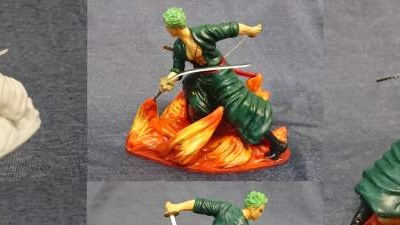At present, 3D printing technology has been applied in many fields. Most 3D printed products are monochrome, that is, the natural color of materials. At this time, if there is an additional requirement for the surface color of the printed part, we can solve it by using the way of post-color treatment. The following are four common methods for coloring 3D printouts.
Hand-painted
The hand-painted coloring operation is relatively simple and is a relatively common coloring method. Generally, a layer of light color paint (light gray or white) is applied first, and then the main color is applied to prevent uneven or reverse color.
The painting method is mainly cross painting. First, apply the first layer of paint, and the direction of each stroke is consistent (such as from left to right). When the first layer of paint is dry to 70% or 80%, start the second layer of paint and perpendicular to the brush direction of the first layer of paint (such as from top to bottom).
The pigments used mainly include water-based paint (acrylic paint) and oily paint. Water-based paint is affordable, can be diluted with water, and easy to operate, but its adhesion and color performance are slightly worse than those of oil-based paint (especially in color performance), which is suitable for 3D printing with low color requirements; Oily paint requires special thinner, which generally has a certain pungent smell, and requires professional personnel to operate under special protection. The adhesion of oily paint is better than that of water-based paint, and it is more uniform, but it needs good methods. Once it fails, 3D printouts are easily scrapped (water-based paint can be repeatedly repaired).

Painting
Painting is the main color process of current 3D printouts. Painting refers to the use of spray gun to evenly spray the artificial paint made of nitrocellulose, resin, pigment, solvent, etc. on the surface of the object. There is also a spray tank, which can be sprayed directly on the surface of 3D printing without the help of the spray gun.
The spray tank is mostly oily paint with high adhesion, wide application range and very good color gloss. However, the color is relatively single. Due to the influence of spraying technology and paint dryness, multi-color spraying is more difficult.
After painting, it needs to be dried and fine tuned at the details, so it takes 3-4 hours to paint. In terms of product effect, it is also affected by many factors, such as the degree of manual proficiency, the degree of grasping the second color, the connection of spray points, etc., and the technical demand is strong. In terms of color glossiness, affected by the original mirror surface of the product, the glossiness is second only to the effect of electroplating and nano-spraying.
Painting and coloring, with moderate cost and the widest range of application, are often used in the same work together with hand-painting.

Electroplate
Electroplating is the process of plating a thin layer of other metals or alloys on some metal surfaces by using the principle of electrolysis. It is the process of using electrolysis to make the surface of metal or other material parts adhere to a layer of metal film to prevent metal oxidation (such as corrosion), improve wear resistance, conductivity, reflective property, corrosion resistance (copper sulfate, etc.) and improve aesthetics.
Electroplating color is less, but its high gloss color mirror and excellent appearance effect are not achieved by pure hand, spray painting and dip dyeing. Electroplating can be applied to metal 3D printing.

Impregnation
It is mainly used for coloring nylon materials. The cost is higher than that of pure manual coloring and painting process. Generally, it is monochrome. The color can be selected and prepared according to the demand. The color of the final product is relatively dark and low gloss, which can achieve simultaneous coloring in small batches.


